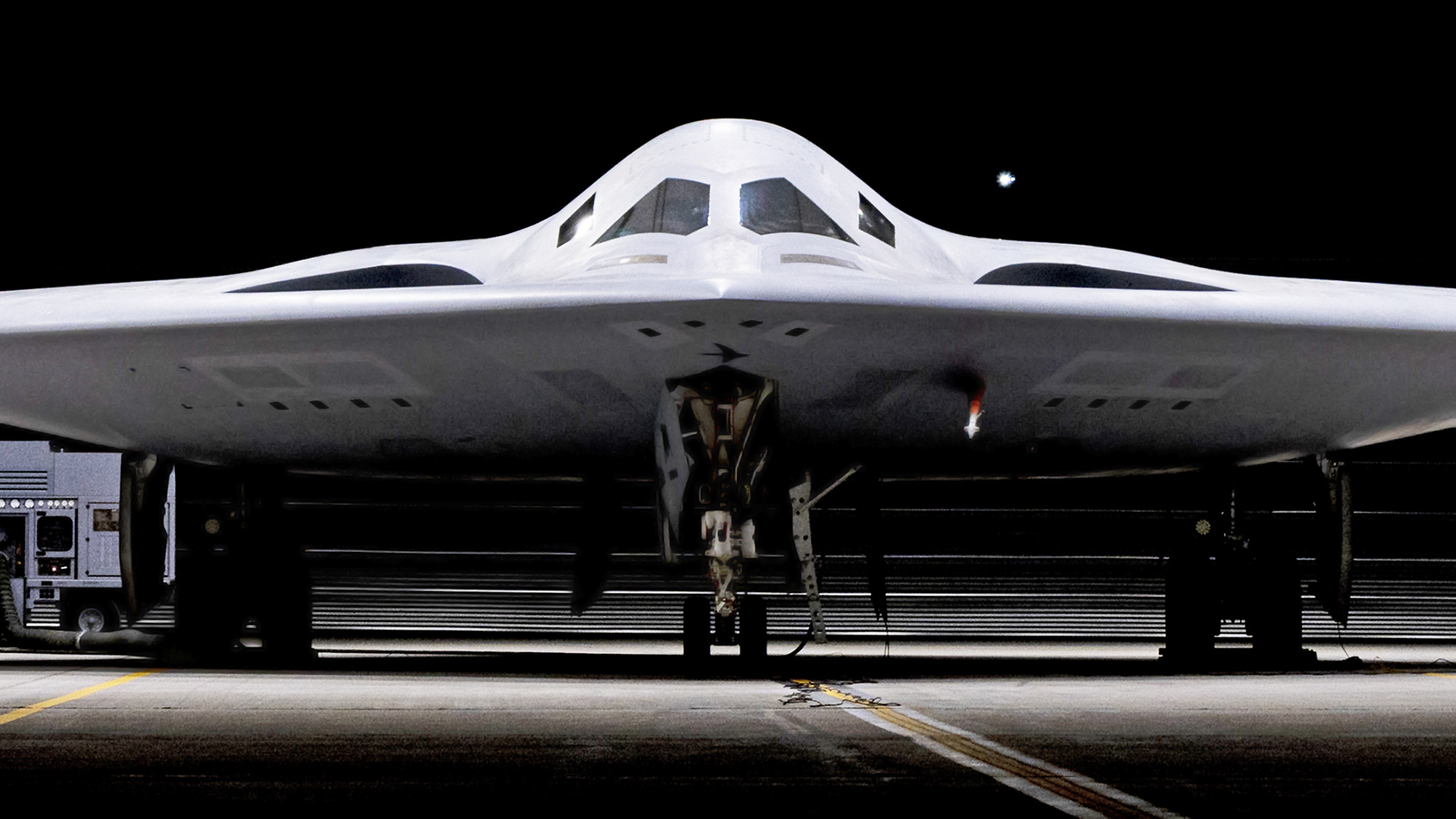The U.S. Air Force’s vision for employing its future B-21 Raiders includes new requirements around refueling the stealth bombers in flight. The B-21, which is still deep in development, is expected to have an extremely long unrefueled range thanks to very large internal fuel capacity, a highly efficient airframe, and advanced engines. The disclosure of the Raider’s aerial refueling demands comes amid uncertainty about the Air Force plans for new stealthy tankers as part of its Next-Generation Air-Refueling System (NGAS) effort.
Air Force Gen. Randall Reed, head of U.S. Transportation Command (TRANSCOM), talked about the B-21’s aerial refueling requirements while testifying before members of the Senate Armed Services Committee earlier this week. Aviation Week was first to report on Reed’s comments.
“As the B-21 bomber enters service, which will modernize and increase our bomber fleet, we must also ensure that we have an adequate tanker fleet to support this platform and the important missions it will perform. I understand that the Air Force will make the ultimate decision on its tanker acquisition strategy, but I’d like to better understand how TRANSCOM is working with the Air Force to communicate its requirements. Are you expressing your needs to the Air Force on what you need to support a nuclear bomber force so that it remains effective and a credible deterrent globally?” Sen. Deb Fischer, a Nebraska Republican, asked Reed.
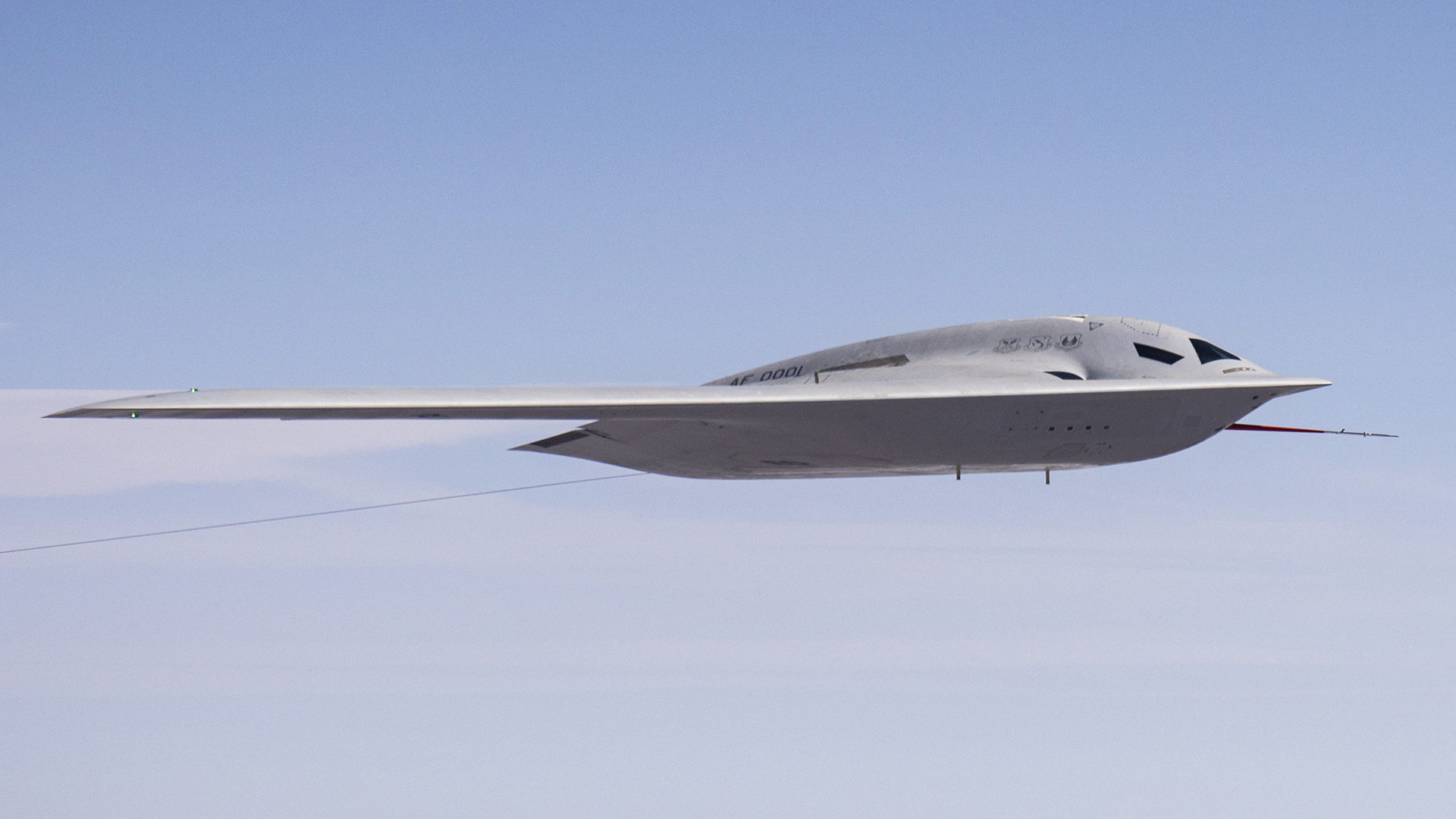
“Yes, Senator. Just within the last month, my staff and I took a trip to U.S. STRATCOM [U.S. Strategic Command], and we sat down with the commander there and his staff to hold warfighter talks. During that time, we described what it is that he’s called to do so that we can more efficiently and effectively understand how we need to be there with him,” Reed said in response. “During that same time, we got a really deep understanding in terms of how they plan to employ their new aircraft, and that will drive a slightly different way in which we are to support them, which actually means that it’s going to be a little bit higher requirement, specifically in the fuel transfer.”
“As a result, he [STRATCOM head Air Force Gen. Anthony Cotton] and I are both working together to go to the service to explain to them what’s, what’s required, and what’s expected in order for us to work together to get that done,” Reed added.

The TRANSCOM head did not provide any more granular details about the aerial refueling requirements to support future B-21 operations. It is unclear whether Reed’s comment about a “bit higher requirement, specifically in the fuel transfer” has to do with the specific rate at which tankers dispense fuel, total fuel capacity available for transfer, or both.
When it comes to fuel transfer rate, Aviation Week‘s report noted that “guidelines set by the international Air Refueling Systems Advisory Group call for refueling booms to support a transfer rate up to 1,200 gal. per minute, an amount equivalent to about 8,000 lb. of JP-8 jet fuel.”
“The B-21’s weight and fuel capacity are not known, but the bomber’s size is generally considered around two-thirds the mass of a B-2A,” that outlet’s story added. “A single B-2A can carry up to 167,000 lb. of fuel. Assuming a 1,200 gal. per minute transfer rate, it could take about 17 min. for a KC-46 to completely refill 80% of the fuel capacity of a B-2A.”
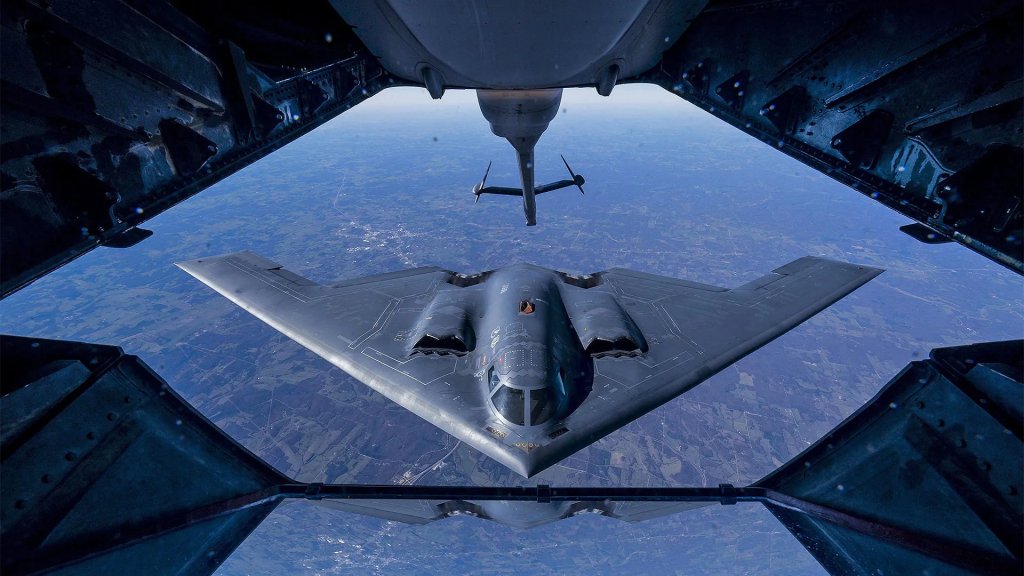
The time any tanker and receiver are linked together creates additional vulnerabilities for both aircraft. Stealthy platforms like the B-21 face additional risks of detection when getting gas from non-stealthy refuelers. The Raider’s design could help mitigate those issues by being able to refuel further away from enemy air defense networks, but the range at which those threats can reach is also increasing. The distance at which detection of non-stealthy aircraft is possible will only increase even more rapidly with each passing year. Increasing the transfer rate also just means that more gas can be offloaded without increasing the total time needed for a refueling window. Altogether, reducing the total time it takes to fill up the Raider’s cavernous tanks could be a point of interest to the Air Force.
More importantly, the total amount of fuel the B-21 can hold could also create additional overall aerial refueling capacity demands. A force of Raiders could require a uniquely large group of tankers to support their operations compared to other types. The Air Force and TRANSCOM have been warning for years now about aerial refueling shortfalls due in part to growing peacetime demands. By procuring tankers with greater fuel capacity tailored to the B-21’s needs and common mission profiles, less tankers could be needed to refuel B-21s on their global missions, freeing assets up for other taskings or just getting by with an overall smaller force.
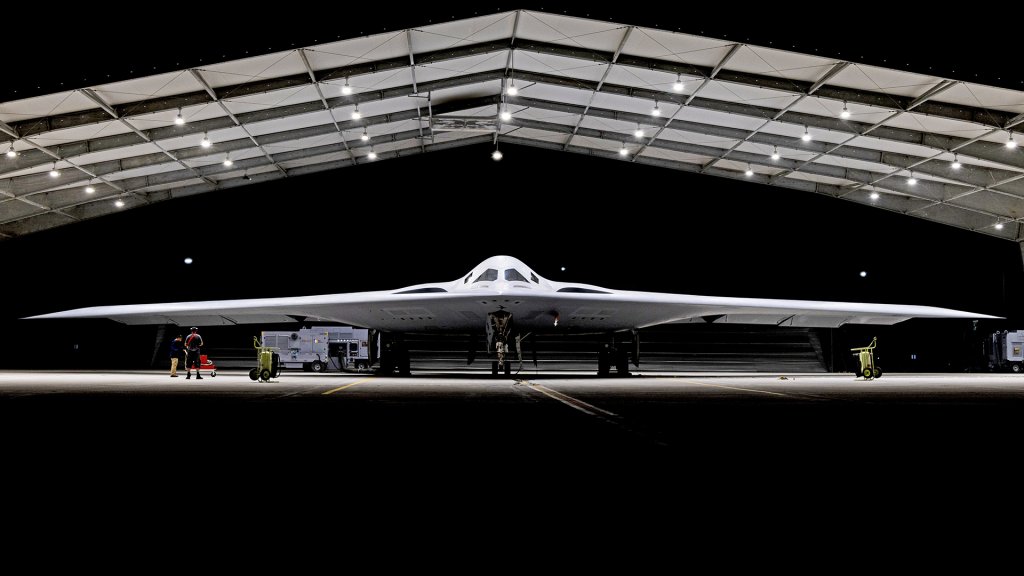
Existing Air Force bombers already fly marathon sorties that can last more than a day and, as already noted, the B-21 is expected to be capable of substantially longer endurance operations than the B-2. These will likely include extreme endurance non-bomber mission sets, like reconnaissance and networking support, as well as other mission types in the future. As TWZ has explored in detail in the past, the Raider’s overall design is optimized for efficient, high-altitude, long-range flight. This includes truncated internal weapons bays compared to the B-2 to help provide for greater internal fuel capacity, despite its overall smaller design. In other words, the aircraft has been optimized for extreme range operations and is very much a flying stealthy gas tank due to these requirements.
The first image that appears to show the B-21’s weapons bay doors open, although engine bays and other access is located below the aircraft, as well:
It remains unknown what engines power the B-21, but the bomber likely has just two of them, instead of four on the B-2, and they offer a high degree of fuel economy.
“I have to ask Jill to bring the most highly-efficient engine to the B-21 because I have to sip gas, and I have to go a long ways with very, very heavy weights,” Maj. Gen. Ty Neuman, director of Strategic Plans, Programs and Requirements at Air Force Global Strike Command (AFGSC), said during a panel discussion on next-generation aircraft at the Air & Space Forces Association’s (AFA) 2025 Warfare Symposium on Wednesday. Jill in this case was Jill Albertelli, president for Military Engines at Pratt & Whitney, who was another one of the panelists.
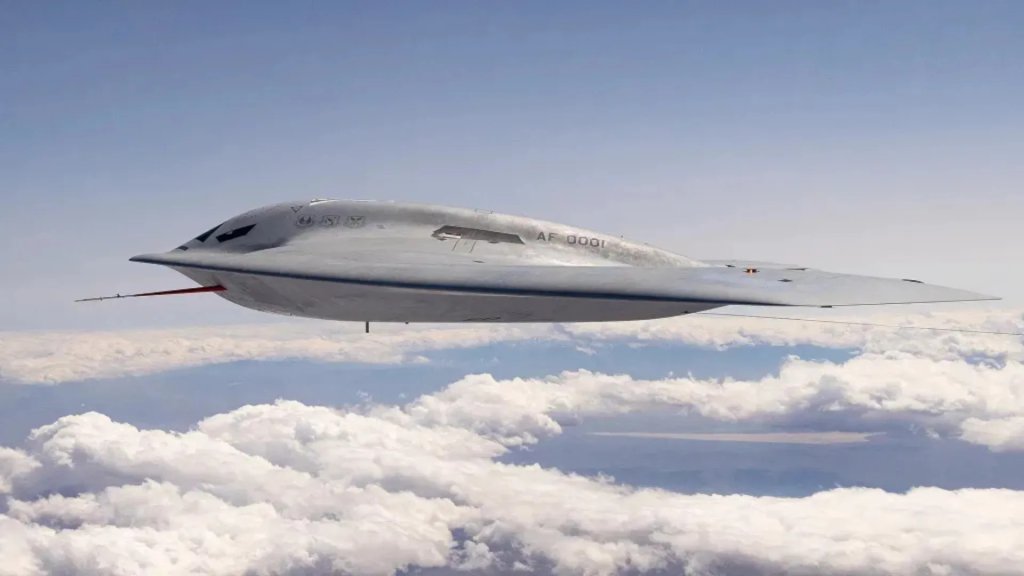
“The B-21 is fundamentally changing the dynamics of warfighting and how we think about it. We’re building an all-aspect penetrating platform that has the range, access, and payload to meet the threat of not only today, but into the future,” Neuman said during that same panel discussion. “We’re building it in such a way that it’s going to be adaptable. It’s going to be adaptable with its open system architecture. It’s going to be adaptable to comm[unications] and networking. And it’s going to be adaptable to an entire family of systems, of weapons, sensors, platforms, com, space, you name it.”
With B-21, “we’re bringing in and developing the most complex … weapon load out that we’ve ever seen in the history of warfare in one platform at the same time,” Neuman added. “So think conventional-nuclear integration, think electronic attack, electronic warfare, all those types of things being all packaged into one [platform]. That’s the type of technology and stuff that this is bringing to bear.”

Neuman’s remarks underscore that the B-21 is much more than just a bomber, as TWZ regularly highlights. The aircraft is also just one part of a larger Long-Range Strike (LRS) family of systems, details about which remain heavily classified, as you can learn more about here. The LRS ecosystem does include the forthcoming nuclear-armed and stealthy Long Range Stand Off (LRSO) cruise missile.
The B-21 is also still making its way through the final phases of development ahead of its expected entry into operational service later this decade.
“I’m very pleased with where we are, both in terms of cadence and performance,” Tom Jones, executive vice president and president of the Aeronautics Sector at Northrop Grumman, the company responsible for the B-21, and another member of Wednesday’s panel at the AFA Warfare Symposium, said. “We’re able to turn around a first serial number aircraft, fly multiple times a week, which I think bodes very well for making this a daily flyer, which is something we promised from the beginning. I think that cadence also speaks a little bit to you know, there’s discovery [of issues] in every test program, but to date, if you’re able to fly at that cadence, it’s an indication that the discovery is not at a significant level.”
The Air Force is currently conducting flight testing using the first pre-production B-21. Five other pre-production B-21s are in various stages of construction. A pair of non-flying airframes are also being used to support the going test work.

“In terms of performance, our tests continue to match closely with our digital data. We’ve talked a lot over the last several years about our digital engineering models, where we have models that we’re looking for tight correlation,” Jones continued. “We’re seeing very good correlation. There’s other places where we maybe modeled a little bit of extra margin in to make sure that we had the performance we needed. And we’re seeing good margin in the places that we model margin.”
“Before we ever even got to first flight, we had more than 200 flights on the flying testbed with over 1,000 flight hours where we’re able to exercise hardware, software, sensors, navigation, communication suites,” he added. “So after you get into the mission systems integration, that’s usually a lot of places where you can get a lot of discovery. We’ve got 1,000 hours plus of discovery and mission systems integration behind us, which I think bodes very well for where we’re going overall.”
Jones did not provide any more details about this testbed platform, which was also mentioned in but not elaborated on in a recent Northrop Grumman B-21 press release. TWZ has reached out to the company for more information. This is most likely a reference to the firm’s G550 test platform that is thought to have been deeply involved in B-21-related testing. Clandestine test articles related to the program could also exist.
The U.S. military and members of Congress have long touted the B-21 as a model program that has managed to stay on budget and schedule despite its complexity and issues uncovered along the way.
Separate from the B-21 program, but intertwined with it, especially with the news about the Raider’s aerial refueling needs, there is also the matter of the Air Force’s NGAS initiative. NGAS has also been shaping up to be a system of next-generation aerial refueling capabilities, the centerpiece of which could be new stealthy tankers, but its future is murky.
“On the air refueling side of the house, we’ve done a lot of work on analysis of alternatives for the Next Generation Air-Refueling System, effectively known as NGAS,” Air Force Gen. John Lamontagne, head of Air Mobility Command (AMC), said during a separate panel talk at the AFA Warfare Symposium on Wednesday. “That work has – most of that [has] been submitted to OSD [Office of the Secretary of Defense]. We’re following up with a couple finishing touches here over the next month or two. And it effectively looks at sort of the trade offs between how big does the runway need to be, how much fuel can you deliver at range, and then signature management for how far we can go forward into the threat environment and the trade offs across those three.”
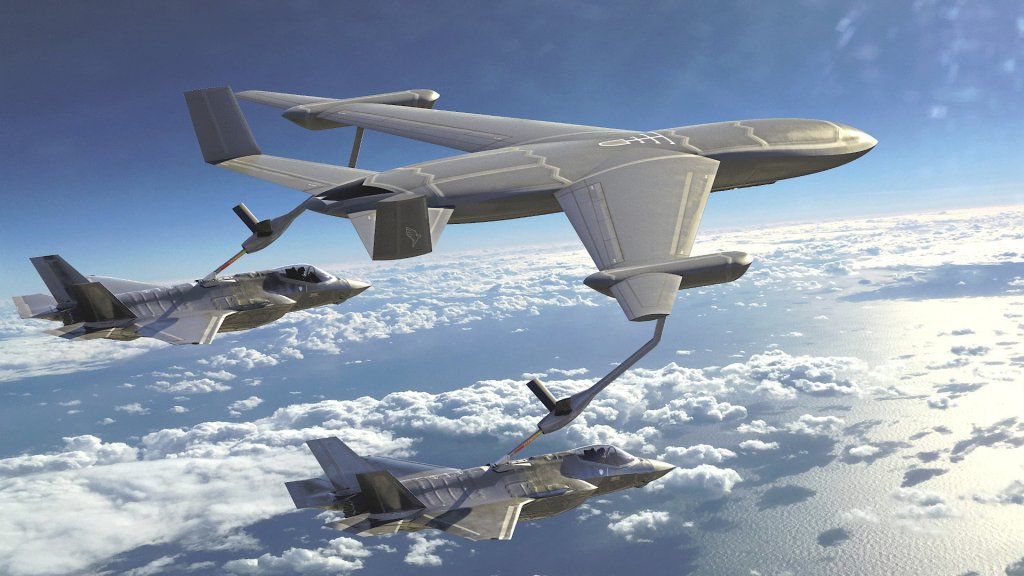
The Air Force has also been exploring other options for improved and expanding aerial refueling capabilities and capacity, and making them more survivable in higher-threat areas. This includes new podded boom-equipped systems that fighter-sized aircraft could carry.
A big question for NGAS, as well as other top-priority Air Force modernization efforts, remains cost. Serious concerns emerged last year about whether the service could afford to buy stealthy tankers, as well as new sixth-generation crewed stealth combat jets and Collaborative Combat Aircraft (CCA) drones being developed under the Next-Generation Air Dominance (NGAD) initiative.
A deep review of the NGAD combat jet plans, which are currently paused, concluded that acquiring at least some number of those aircraft will be critical to ensuring the Air Force can best provide air superiority with the lowest amount of risk, especially in future high-end fights. The billions of dollars required to pay for that could then eat into other efforts like NGAS.
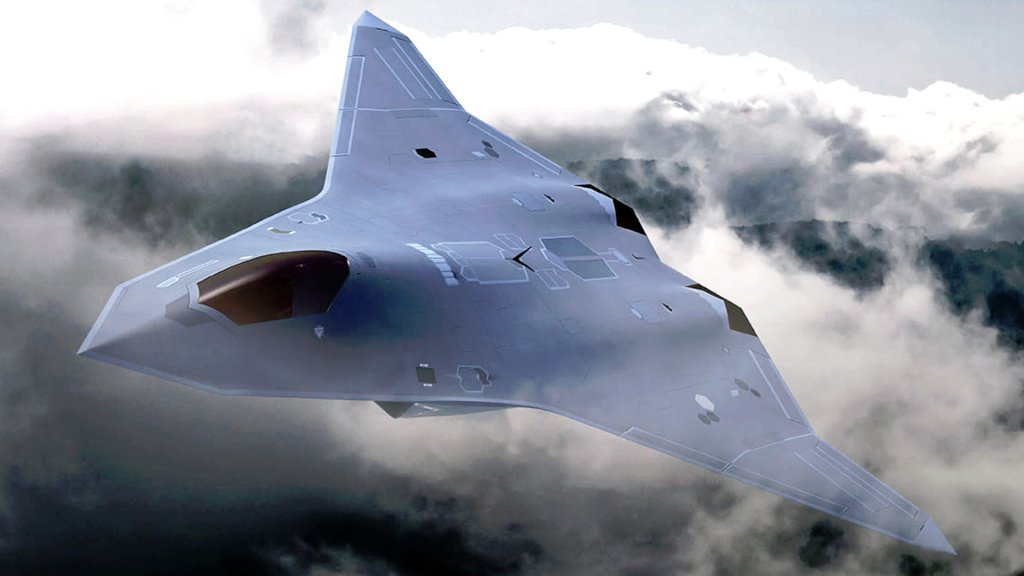
The Air Force has already been contending with the ballooning costs of the Sentinel intercontinental ballistic missile (ICBM) program. The Department of Defense under Secretary Pete Hegseth is also now looking for existing programs to cut to free up billions of dollars in funding for new Trump administration priorities like the Golden Dome missile defense initiative.
An ongoing debate over the optimal size of the B-21 fleet presents its own budgetary implications. The current plan is to buy at least 100 Raiders, but there has been talk of increasing that figure.
“I would contend it’s not just an Air Force decision when it comes down to the actual quantity,” Neuman said on Wednesday about the B-21 fleet size debate. “The capabilities that we’re developing and fielding on the B-21, that is a national mission, it’s actually a force enabler, force multiplier, for the entire joint force. And if we’re going to spend the time and energy to get after this and then produce more than what we have on record right now, the nation is going to have to be like, ‘Yes, this is where we’re going to go. This is the future.'”
However many B-21s the Air Force ultimately acquired, the Raider is set to have significant impacts on the service’s force structure and how it operates going forward, including when it comes to the bomber’s now-disclosed unique aerial refueling demands.
Contact the author: joe@twz.com
